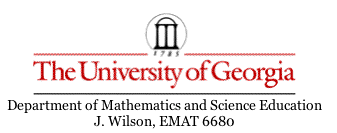

Stamp Prices
| Year | Rate(in cents) |
| 1919 | 2 |
| 1932 | 3 |
| 1958 | 4 |
| 1963 | 5 |
| 1968 | 6 |
| 1971 | 8 |
| 1974 | 10 |
| 1975 | 13 |
| 1978 | 15 |
| 1981 | 20 |
| 1985 | 22 |
| 1988 | 25 |
| 1991 | 29 |
| 1994 | 32 |
| 1997 | 33 |
| 1999 | 34 |
| 2002 | 37 |
| 2004 | 39 |
| 2006 | 41 |
| 2008 | 42 |
| 2009 | 44 |
Graphing the data to the left with cost versus time we get the following graph. As shown, we can see that the cost of stamps increases slowly at first, and then rapidly. Because of this, to create a line to fit the graph, I will examine first the data until 1963 and then data from 1968 onwards.

Once I knew where to split the data, I fit two linear trend lines to the data in Excel. Each set of data has its own equation and r-squared value. Remember r-squared is the proportion of the variation in the y-value that is accounted for by the linear relationship of y with x. Thus, when r-squared is close to 1, we have selected a good trend line.
To make sure I had selected a good trend line for the data, I found my residuals. A residual is used to find prediction errors in the data. It is the vertical distance between the given point and the regression line. Residuals are equal to the actual value for y minus the predicted value of y. If I have created a good regression line for the data, the residuals should be small and a plot of them should be random. Thus here is my residual plot:
Since the plot is random and the residuals are fairly small, I believe I have selected a good step-wise function for my data.
Looking back to the original graph:
The first part of the graph is of stamp prices from 1919 to 1963. Here we find that the linear line of y=0.0598x-112.61 best fits the data. Since the r-squared value is 0.94, we know that 94% of the variation in the stamp price is explained by the line (the close r-squared is to 1, the better the created line is).
The second part is the graph of stamp prices from 1968 to 2009. Here we find that the linear line of y=0.9219x-1808.1 best fits the data. Since the r-squared value is 0.99, we know that 99% of the variation in the stamp price is explained by the line. Because our r-squared value is very good, I believe that this graph is a good representation of the data.
Hence I will use the second line to predict future stamp prices since the r-squared value here is very high and also since this line is more representative of the current United States Postal Service (USPS) as in these later years the USPS is self-sufficient.
The next 3 cent increase in stamp prices can then be found using this equation: y=0.9219x-1808.1. We will set y=44+3=47 and then solve for x:
47=0.9219x-1808.1
1855.1=0.9219x
x=2012.257
Hence the next 3 cent increase will occur in the year 2012.
Finding the year that the stamps will cost any other price can also be found using the same method:
The cost of stamps will reach 64 cents in the year:
64=0.9219x-1808.1
1872.1=0.9219x
x=2030.697
So in the year 2030, stamps will cost 64 cents.
The cost of stamps will reach 100 cents (or one dollar) in the year:
100=0.9219x-1808.1
1908.1=0.9219x
x=2069.747
Meaning, in the year 2069, the price of a stamp will be one dollar.
I cannot tell how accurate these predictions will be though since these predictions are many years into the future and the data I have does not extend too far into the past. Thus, I am not comfortable extrapolating my graph this far, since it may not be accurate. Hence I would not be surprised if these predictions are underestimates based on the recent behavior of the USPS.